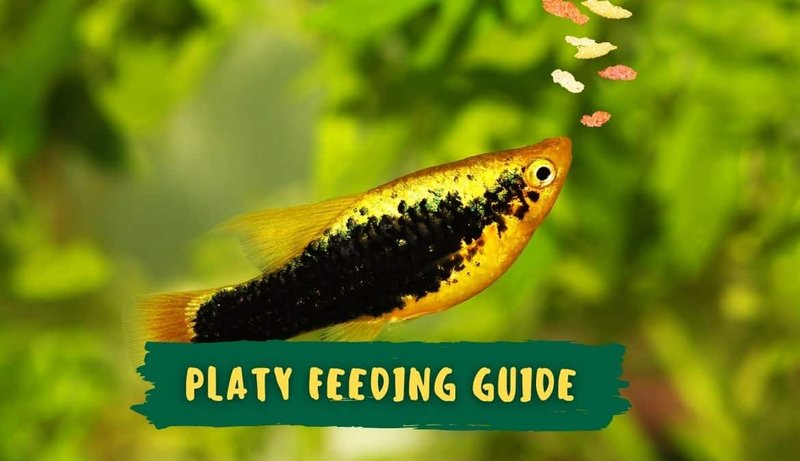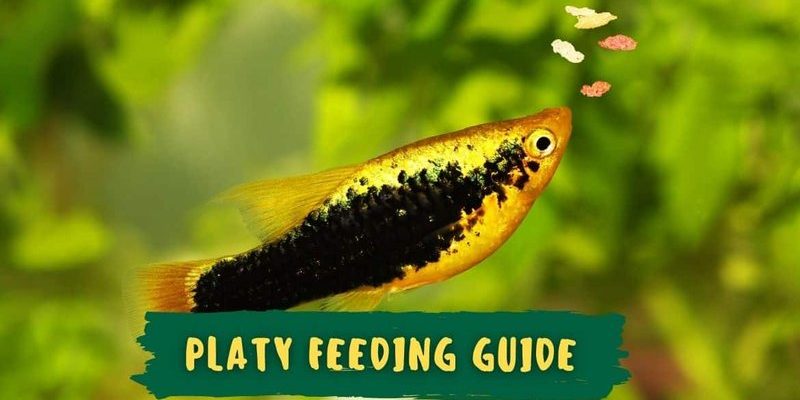
You might be surprised to learn that platies are omnivores. This means they enjoy both plant-based and meaty foods, giving you plenty of options for their diet. Just like you might serve pasta one night and a salad the next, you can mix up their meals to keep things interesting while ensuring they get all the necessary nutrients. In this article, we’ll dive into what platies eat, how often you should feed them, and some handy nutrition tips to keep them healthy and happy.
Understanding the Diet of Platies
Platies consume a variety of foods, which means they can adapt well to different diets. In the wild, they eat small insects, algae, and plant matter. This omnivorous nature allows them to benefit from both protein and plant sources. You might think of platies like little aquatic vacuum cleaners, happily munching on whatever they can find.
Here’s a quick breakdown of their dietary preferences:
- Plant Matter: Platies enjoy munching on algae and soft plant leaves.
- Protein Sources: They benefit from protein-rich foods like brine shrimp and daphnia.
- Commercial Fish Food: Good quality flakes or pellets designed for omnivores are great staples.
Making sure to offer a balanced diet will help your platies thrive.
Best Foods for Platies
Choosing the right foods for your platies is vital for their health. There are many options available, and each has its benefits. Here are some popular choices:
Commercial Fish Food
The easiest option is to go for high-quality flakes or pellets specifically made for community fish or omnivores. These products are often packed with essential vitamins and minerals. Look for brands like TetraMin or Omega One, which are well-regarded in the fish-keeping community.
Frozen And Freeze-Dried Foods
Another option is frozen or freeze-dried foods. Think of these as the frozen pizza of the fish world—they’re quick, easy, and can be highly nutritious. Brine shrimp, bloodworms, and daphnia are all great choices. Just remember to thaw them before feeding and use in moderation.
Fresh Vegetables
Platies also love fresh veggies! You can provide them with blanched spinach, zucchini, or peas. Just chop them into small pieces to prevent choking and to make it easier for your fish to nibble. Adding veggies to their diet can help enhance their colors and overall health.
How Often Should You Feed Platies?
You might be wondering, “How much food is too much?” Feeding platies is about finding the right balance. Generally, it’s a good idea to feed them 2-3 times a day.
Portion Control
The key is portion control. Only offer as much food as they can eat in about 2-3 minutes. If you notice leftover food sinking to the bottom, you’re probably feeding them too much. Overfeeding can lead to poor water quality and health issues for your fish.
Scheduled Feeding Times
Establishing a routine can help. For example, you might feed them in the morning after turning on the lights and again in the evening before they settle in for the night. This consistency can help your platies know when to expect their meals, making them more comfortable with their feeding.
Special Considerations for Platies
While platies are generally easy to care for, there are some things to keep in mind to ensure they stay healthy.
Water Quality
Good water quality is crucial for platies. Poor water can affect their appetite and overall health. Regular water changes and testing for ammonia, nitrates, and nitrites will help maintain a safe environment for your fish.
Health Monitoring
Keep an eye on your platies. If they seem less interested in food or are acting strangely, it might be a sign of stress or illness. Stress can be triggered by fluctuations in water conditions, getting bullied by other fish, or even changes in tank decor.
Homemade Fish Food Recipes
If you’re feeling adventurous, you might want to try making homemade fish food. Not only can you control the ingredients, but it can also be a fun project!
Simple Veggie Mix
You can create a blend of vegetables like peas, spinach, and zucchini. Steam and blend them together, then freeze them in small cubes. This way, you can easily pop out a few whenever it’s feeding time.
Meat-Based Treats
For a protein boost, you can blend shrimp with some vegetables and freeze them in the same way. Just make sure to do this in moderation to prevent any imbalances in their diet.
In conclusion, feeding your platies doesn’t have to be complicated. With a good mix of commercial foods, fresh vegetables, and occasional treats, they’ll thrive in your tank. Like any good relationship, keeping your platies happy involves observation, understanding their needs, and fine-tuning their diet. Remember to keep their water clean and maintain a feeding routine. By doing this, you’ll not only keep your platies healthy but also enjoy watching them display their beautiful colors as they swim joyfully around their home. Happy fish keeping!

